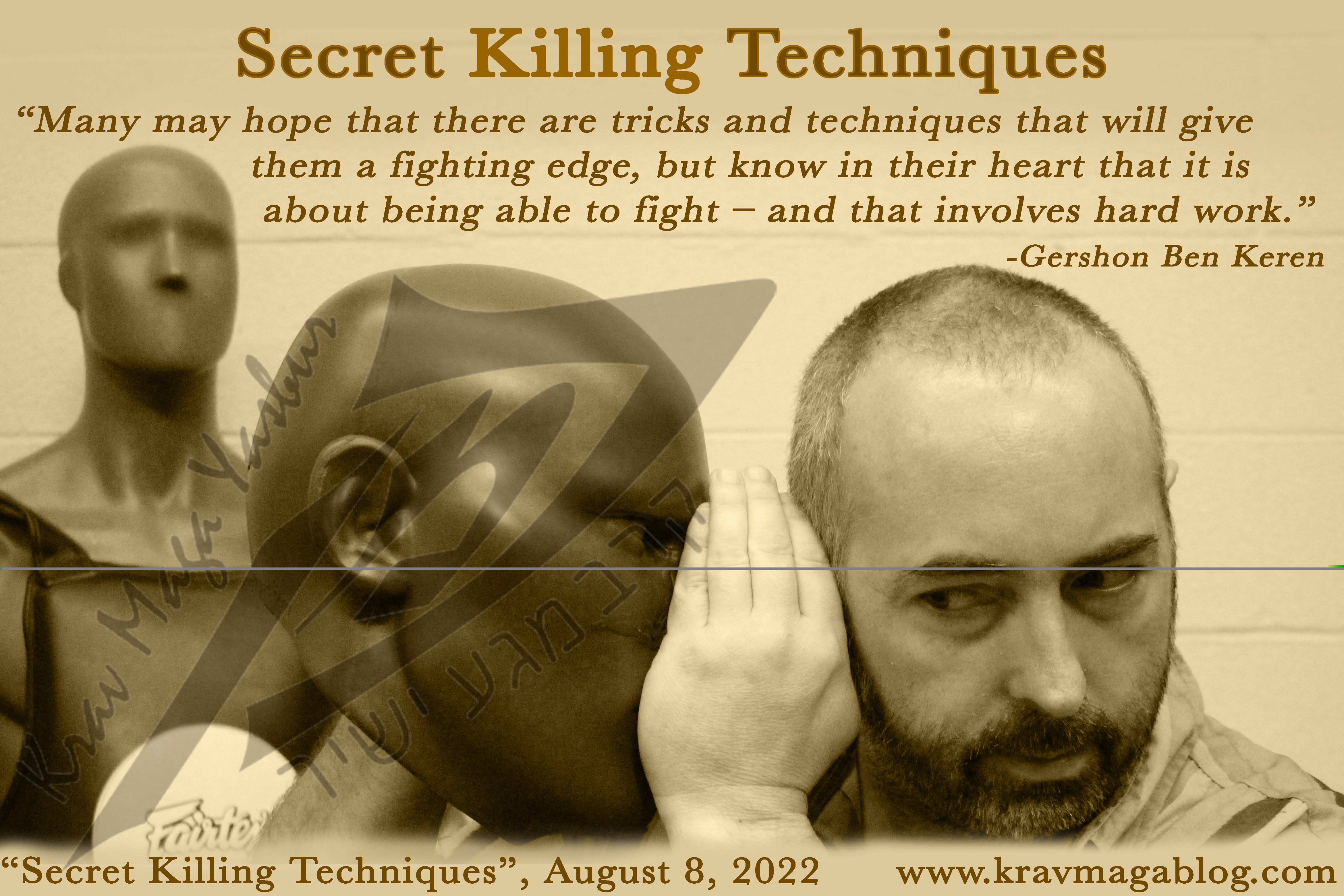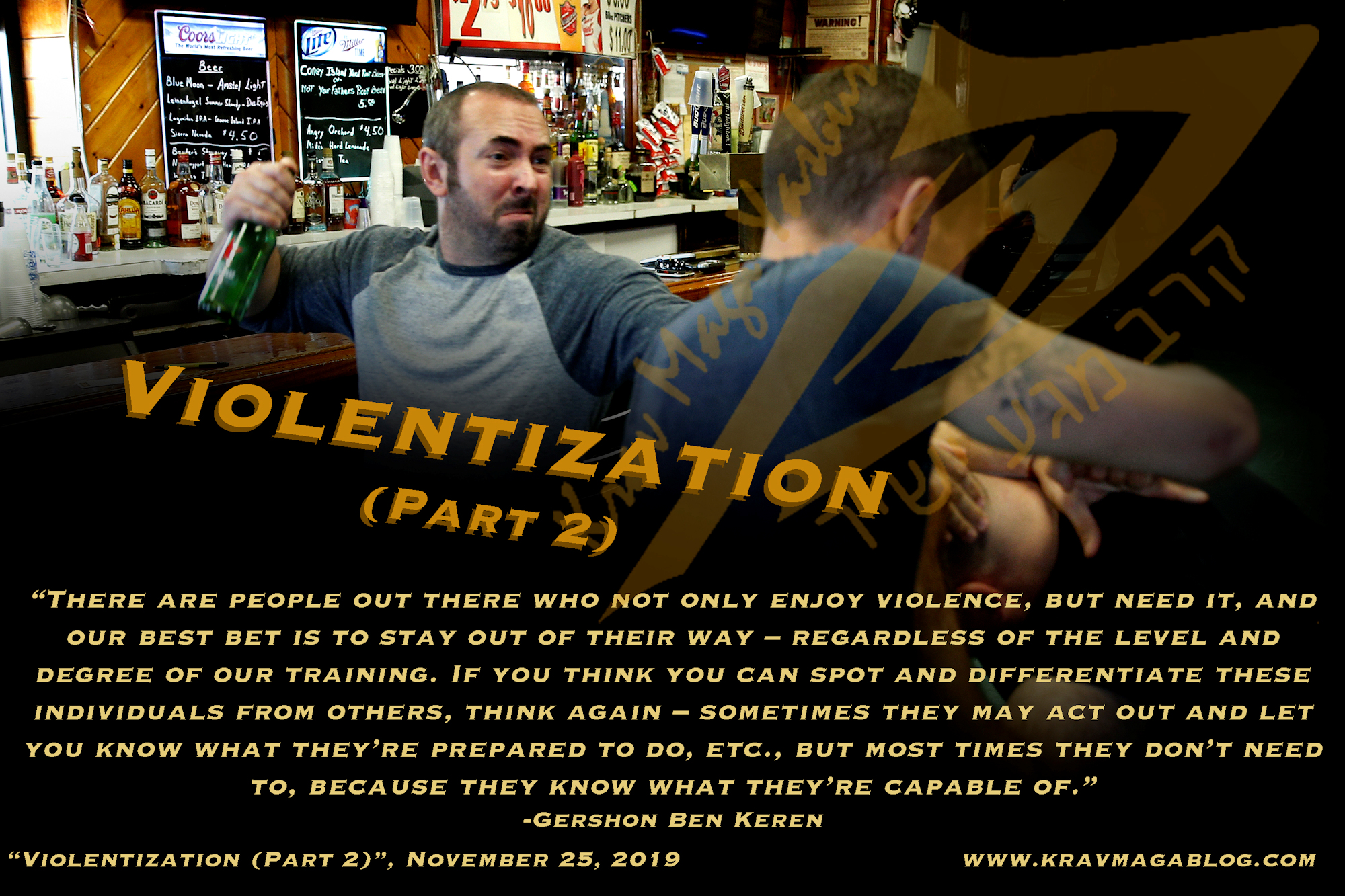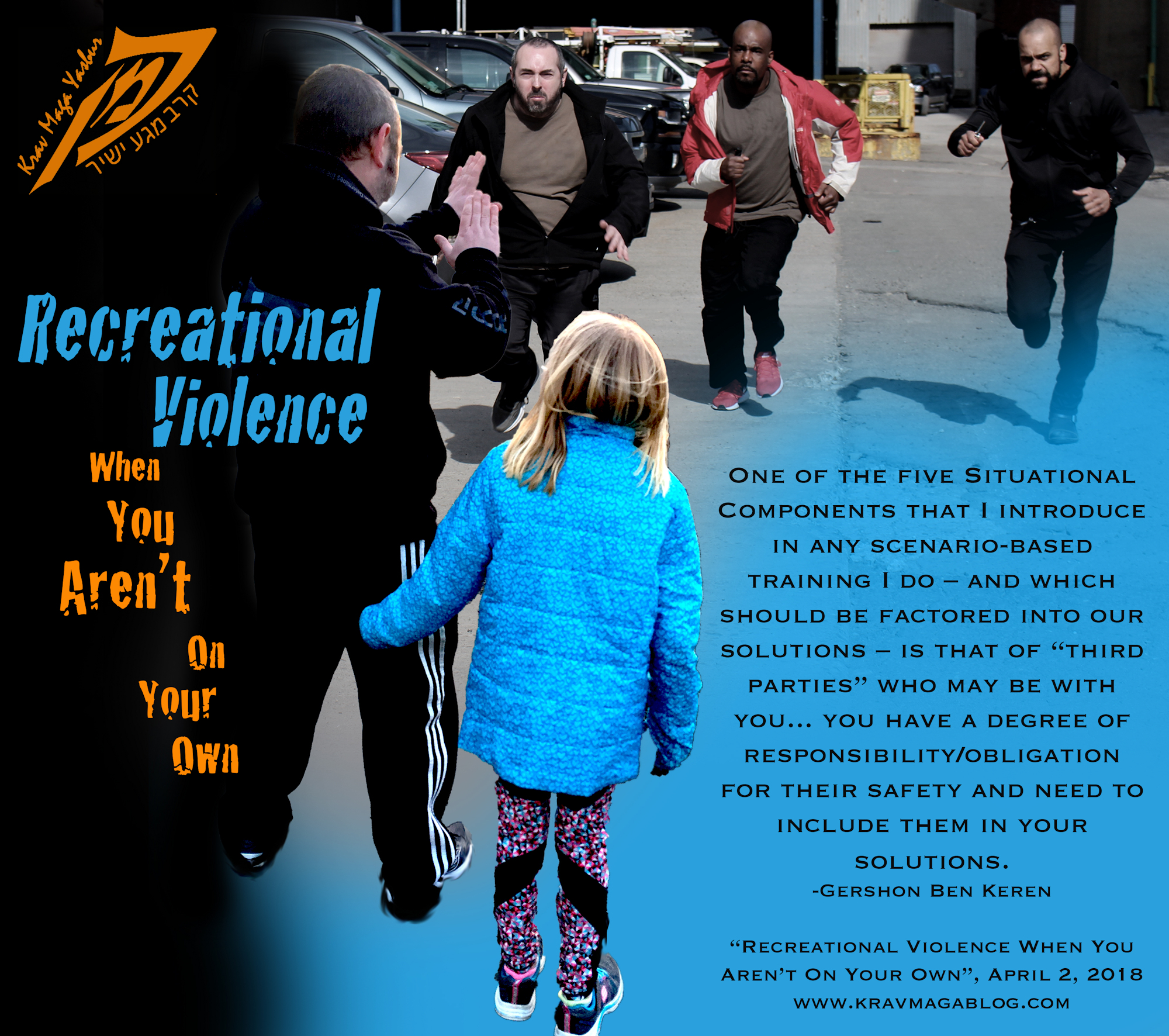Recreational Violence - When Not Alone, is an article written by Gershon Ben Keren, a 5th Degree Black Belt in Krav Maga, who teaches Krav Maga in Boston, MA. He has also authored three Amazon best-Selling Books on Krav Maga.
One of the lines I’m always saying when teaching physical self-defense solutions is, “Armed, Assisted and Able.” They are three assumptions that you should always make when confronted with an aggressor i.e. that they have a weapon (even if you can’t see it, or have already disarmed them of one), that there are third parties in the environment that can assist them, and that they are technically, physically and skillfully able to respond to anything you do; this doesn’t necessarily mean they are “better” than you, rather that you shouldn’t assume that a punch you throw will have the desired impact, or that an assailant won’t be able to thwart your escape from a strangle, choke, grab, etc. If we work to these assumptions, in almost all situations, we should be doing anything we can to avoid engaging in violent altercations. A few weeks ago, I wrote an article on “Recreational Violence”. This type of premeditated violence often differs from Resource Violence (muggers, robbers etc. who want your resources), and Exploratory Violence e.g. sexual assaults committed by sadistic rapists, in that it is completely uncontrolled, frenzied, and is usually committed with an accomplice or accomplices; imagine a gang armed with knives, blades, and machetes, running you down, to repeatedly stab, cut, and slash you, simply because it gives them something to do; or a group who throws acid at you, not because they want your wallet or other possessions, but because it gives them status within their group, etc.
You may feel that this type of violence is uncommon and can be avoided through lifestyle, however these groups and individuals are often opportunistic in who they target – in May 2017, a man was stabbed to death in front of his girlfriend when a mob ambushed them as they walked back to their car; he had no gang affiliations, etc., he was simply targeted because he was an available/suitable victim (Romford, London). In “Recreational Violence”, I suggested certain solutions that may improve your survival chances when involved in such incidents, however it was written from the perspective of being caught on your own, and I was asked how you would handle a similar situation if someone was with you, and you didn’t have the opportunity to run or disengage (probably a consideration that the Romford murder victim was having to make, as he was stabbed to death). One of the five Situational Components that I introduce in any scenario-based training I do – and which should be factored into our solutions – is that of “third parties” who may be with you e.g. partners, children, coworkers, etc. Sometimes these third parties may be friends who initiate/start the trouble, and sometimes they may be “bystanders” to the situation who are simply witnessing it, but in some way, you have a degree of responsibility/obligation for their safety and need to include them in your solutions. In this article, I want to look at Recreational Violence, when a third party is with you. I would caveat everything I write by saying these are “ideas” that can be – but not necessarily should be – included in a solution, and should not be read as a prescriptive or definitive solution to every situation. Every situation is different, and situations should determine solutions, not the other way around.
The first step is to have a conversation with those who you are regularly with, such as partners and children, about what they should do in various incidents. Obviously don’t terrify them – especially children – but explain that on a certain signal, or command, they should enact an agreed-upon solution. This may involve them moving behind you, making a phone call, going to get help, etc. Be realistic in your expectations of how they’ll be able to act in a situation e.g. a three or four-year-old, although physically capable of going to get help, is unlikely to leave you, as they still feel a dependence on you to protect them. As a side note, it is important to recognize how toddlers and small children, will follow adults and older children, even if they are causing them pain and harm, because they are programmed to stay close for their safety; Jamie Bulger, a three-year-old boy who was murdered by two, ten-year-old boys in 1993 (Kirkby, England), continued to go along with his murderers, even as they led him to his death. It’s likely that he saw them as his best chance of survival, because he instinctively knew that once separated from his mother, he wasn’t capable of surviving on his own. If it is a small child who is with you, you may want them to hold onto an article of your clothing, such as a pant leg or skirt, so that you can know where they are, and maneuver the two of you to a better position, without having to take your eyes off your aggressor(s). With an older child or partner, you may want them to put a hand on your shoulder, so that you know where they are at all times.
If your strategy does involve sending a child for help, give them instructions, and tell them to seek out a woman i.e. someone who is statistically much less likely to be a sexual predator, and someone whose maternal instinct is likely to kick in, and offer help, etc. They should have instructions, to call the police, and then call another responsible adult such as the other parent, or a family friend, who can come and take care of them – if you are the victim of multiple stab wounds, and are taken to hospital, you will want somebody to come and take care of your kid for you. Your child should have such a number memorized, and know their street address, from the earliest age where this is possible. The less you have to think and worry about when dealing with an armed group, the better. You may also want to have whoever is with you, disengage when the physical altercation begins, especially if you are the target. One way to create some more time and distance for them to get away, is for you to initiate the fight, rather than wait for them to do so; in that initial moment of confusion, where the group is being attacked, they may not be aware enough to split their numbers and go after the other person. In your conversations beforehand, you should make sure the person you are with knows that they should run to safety, such as a populated place (where they can seek assistance) rather than simply running from danger, aimlessly.
Try to make use of your environments, such as by using natural “funnels”, which restrict access to you both e.g. back away between some parked cars, which will force your assailants to go around them to reach you; again you will want to be trying to move faster than them, so that you can get into another funnel before they reach you (if you are with an adult, have them calling 911, with very brief instructions about your location, and have the dispatcher stay on the line – you should do this as a matter of protocol every time you call the police to turn up; also explain to them who you are, and what you are wearing etc.). In almost every multiple attacker situation, you are better making the first move, with the goal of looking to create an opening from which the two of you can exit. If you are with another adult, you may want to instruct them – preferably beforehand – to fight with you. Have them hold onto you with one hand so that the pair of you can target one member of the group, forcing that individual to deal with “multiple attackers”. If necessary, you can then move on to another group member, and another, putting each in a 2-on-1 fight.
As with all types of violence, the earlier you can spot the warning signs, the quicker you can put a plan into place, and the more options you will potentially have. If a group ambushes you, i.e. you never saw it coming, then there is little you can do, other than hope that those with you, haven’t also been targeted. This is one reason when you are with others, you still want to stay aware, and not become engrossed, and entirely focused on the other person. If you do, you will have no understanding of what is happening in your environment, and little chance of identifying or predicting violence. There are no short answers for dealing with Recreational Violence, especially when you have those with you, who may not be able to run or disengage quickly with you, however having a plan of how you, they, and the two of you should act is the first step, in increasing your survival chances.
0 COMMENTS















